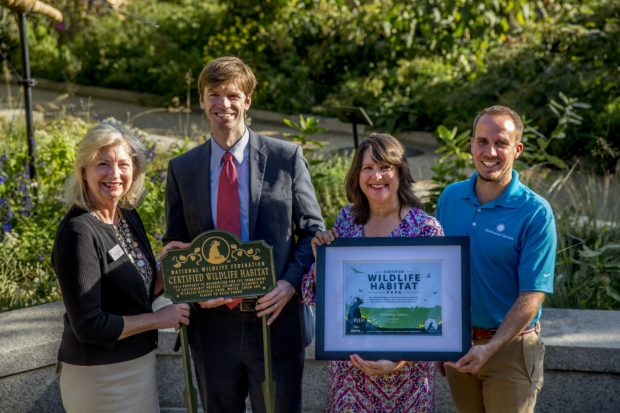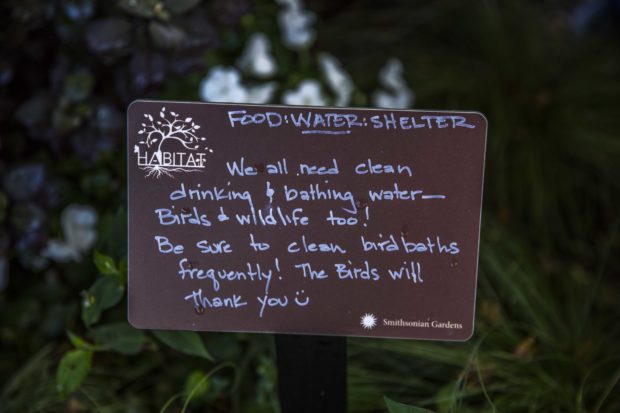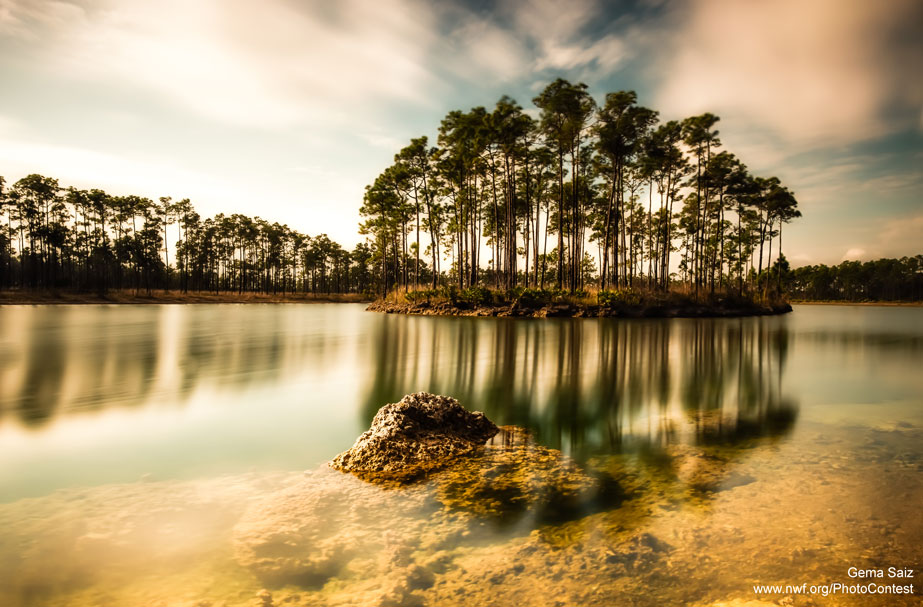We have much more to do and your continued support is needed now more than ever.
A Bug’s Eye view : Protecting Habitats Protects Life at Smithsonian Gardens

Imagine a larger than life journey through the habitat elements of food, water, cover and places to raise young. Each turn is a new discovery of wildlife life above and below the ground, among giant-sized nests, insects and birds.
This was the amazing experience National Wildlife Federation’s staff were guided on when they designated Smithsonian Gardens as the 235,295th Certified Wildlife Habitat®. The Habitat Exhibit is a joint effort of the horticulturist teams of Smithsonian Gardens’ 14 museum outdoor spaces. Visitors can begin at any point in the gardens along either side of the National Mall in Washington, D.C. This expansive habitat exhibit, across approximately 50 acres, includes medians of roadside native plantings, water sources, pollinator gardens, a monarch way station, and a variety of snags, insect hotels, and other habitat features.
President and CEO, Collin O’Mara, thanked Barbara Faust, Director of Smithsonian Gardens and James Gagliardi, Supervisory Horticulturist, and their team.
“Your vision, and the teamwork to create an immersive habitat experience for 6 million visitors, is needed now more than ever in light of growing species decline.”
– Collin O’Mara, President and CEO, National Wildlife Federation
Smithsonian Gardens is now the 81st public garden to become a National Wildlife Federation Certified Wildlife Habitat®, introducing millions more to how they can create habitat where they live, work, play, learn and worship.

“The exhibition underscores Smithsonian Gardens’ mission to inform people on the importance of plants in our cultural and natural worlds,” said Barbara Faust, director of Smithsonian Gardens. “We hope visitors will begin to understand how habitats are interconnected and fragile, and examine their role in protecting habitats.”
Each Smithsonian Garden adeptly weaves the theme of specific museums to the natural history and elements of the habitat gardens on their grounds. Recent reports of the loss of 3 billion birds across North America since 1970, make exhibits like the National Museum of Natural History’s Urban Bird Habitat essential. The exhibit highlights the diversity of spaces where birds live and raise their young through large-scale realistic nests. The African American Museum’s Live Oak grove tells the story of the shelter and gathering place these trees provided in the African American journey to freedom and community building. The story then connects the sheltering theme to how oak trees provide multitudes of insects, birds, and other wildlife with a place of cover. For example, an oak tree is a host for over 500 insect species.

The importance of habitat gardens to both people and wildlife are important stories to archive and share. National Wildlife Federation’s Garden for Wildlife program is Smithsonian Community Gardens’ first national Community Collaborator to encourage our network of wildlife gardeners to share their stories in Community Garden archives, in order to inspire ongoing generations to plant with a purpose for wildlife and people.
Visit Smithsonian Gardens or another Certified Wildlife Habitat® public garden near you for inspiration on how to design with native plants and provide food, water, cover, and places to raise young where you live. Then Certify and share your story in the Smithsonian archives!





















